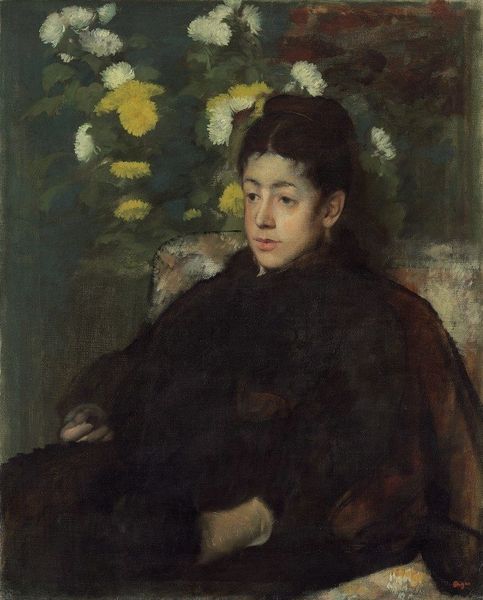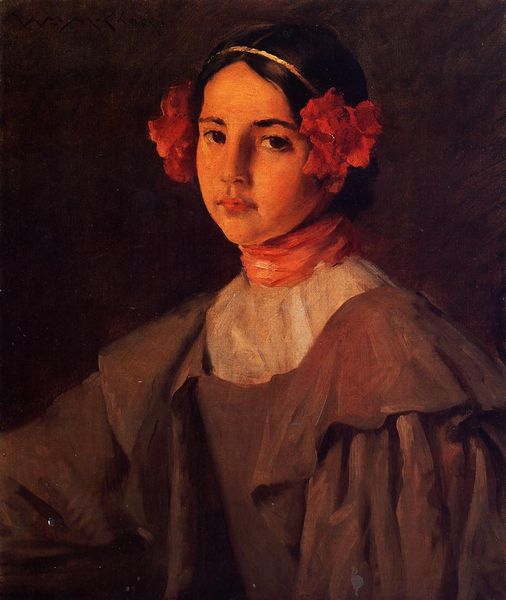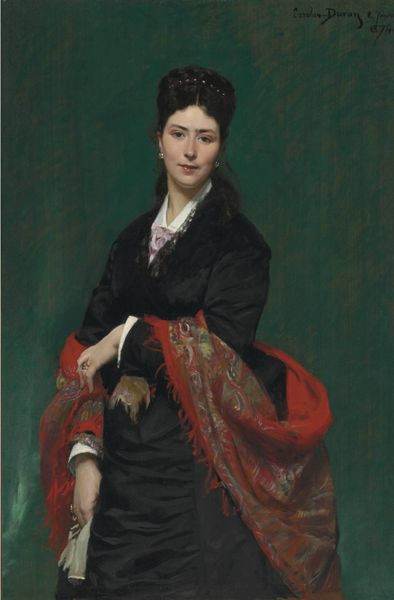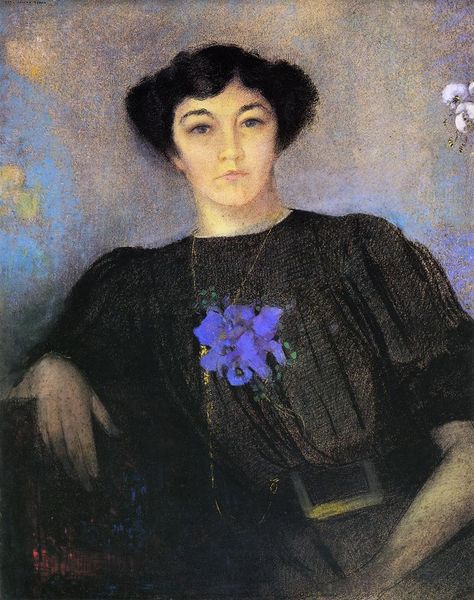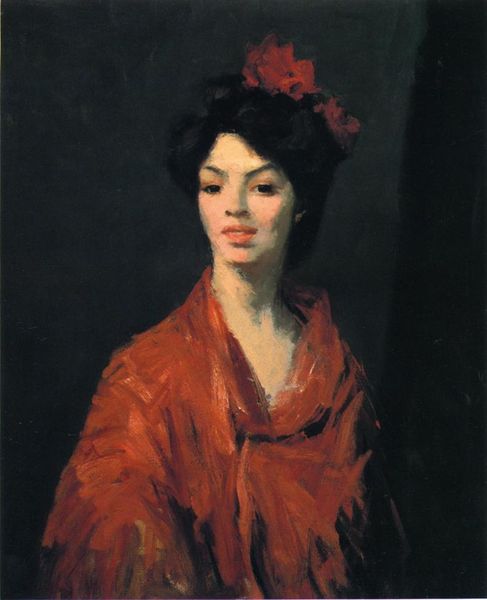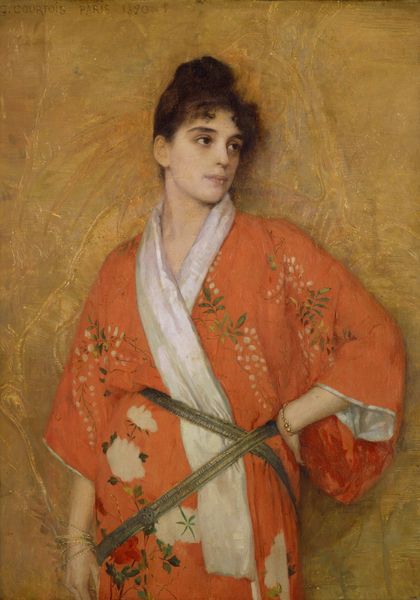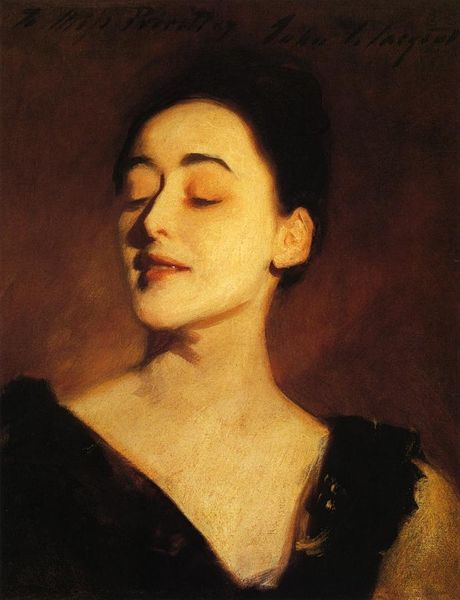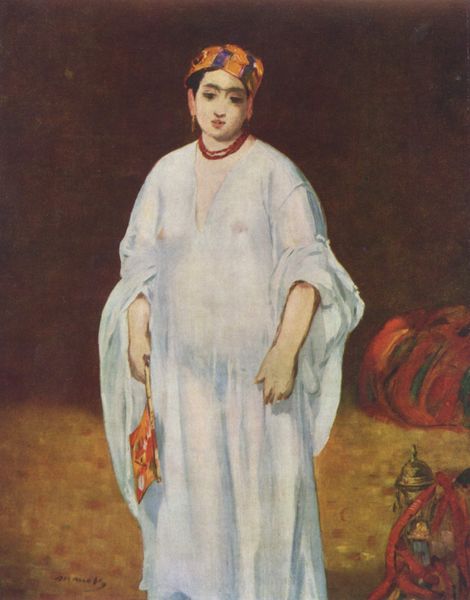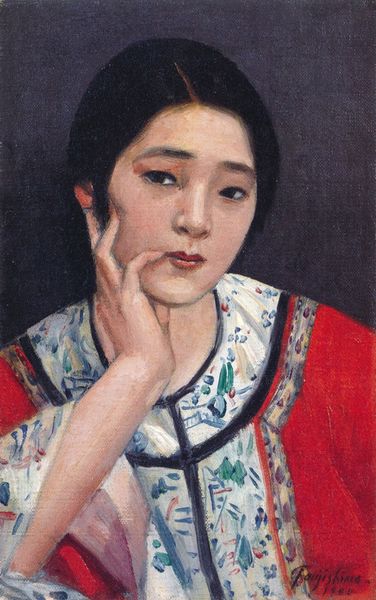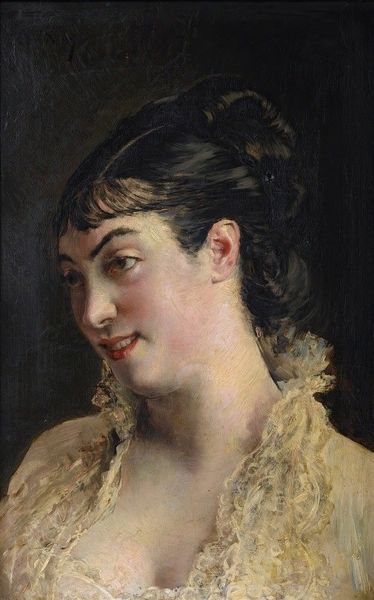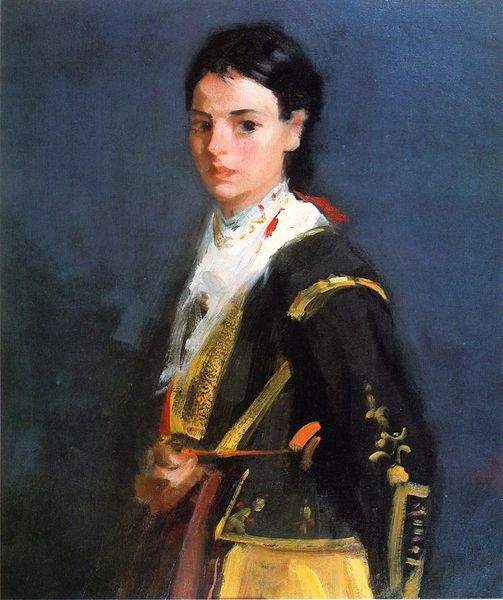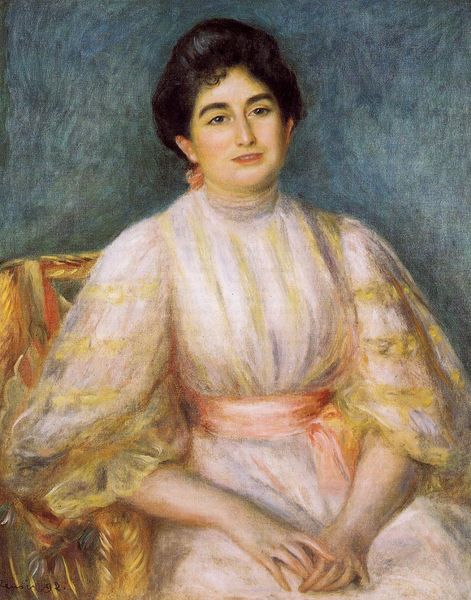
#
portrait
#
portrait
#
portrait reference
#
famous-people
#
portrait head and shoulder
#
animal portrait
#
animal drawing portrait
#
portrait drawing
#
facial portrait
#
lady
#
portrait art
#
female-portraits
#
fine art portrait
#
digital portrait
Dimensions: 91.4 x 63.5 cm
Copyright: Public domain
Curator: Take a moment to appreciate John Singer Sargent's "Flora Priestley," painted in 1889. What's your first impression? Editor: Subdued elegance. I'm immediately struck by the color palette—almost monochromatic, yet punctuated by those brilliant crimson roses. It’s as if she’s dared to let a little joy peek through. Curator: I think Sargent captures a complex psychological depth, don't you think? There is an ambiguity to the portrayal—the subtle ambivalence. The dress, what does that represent? How was it created? Was it mass produced? Handmade? Editor: The materiality tells its own story. Look at how the fabric drapes. There’s a clear understanding of its weight, its fall, almost certainly an expensive silk or fine wool that signifies the social standing. Was it the height of fashion? How does that connect to Victorian notions of feminine roles and social performances? Curator: I love that. Perhaps the roses were the perfect rebellion, in Sargent’s eyes, from that stifling formality. There's a tension, I think, between the constricting clothing of the day and her spirited gaze, as if a secret world lives within her. He doesn't tell us a thing directly; he allows us to *feel* it. Editor: Right, but beyond Sargent’s feeling for his subject, we need to remember he was part of the late 19th-century art market. He was producing for a very specific, monied audience, which informed every brushstroke. What can we learn about the distribution channels, exhibition circuits, and networks through which Sargent circulated and sold these works? Curator: Yes, you’re right—Sargent occupied a privileged position within that market, allowing him freedoms, but also constraints, shaping his choices in often invisible ways. That is, "Flora Priestley," this image and object is both intimate and of a very material historical time. I sense that tension radiating out as a kind of melancholy glow. Editor: It gives us an appreciation for her time but allows to analyze who made this object, who purchased it, and who consumes it, revealing the complex ways artists, patrons, and viewers participated in constructing social identities and shaping cultural values. Curator: A layered portrait then, indeed. Sargent certainly invites us into the dance.
Comments
No comments
Be the first to comment and join the conversation on the ultimate creative platform.
